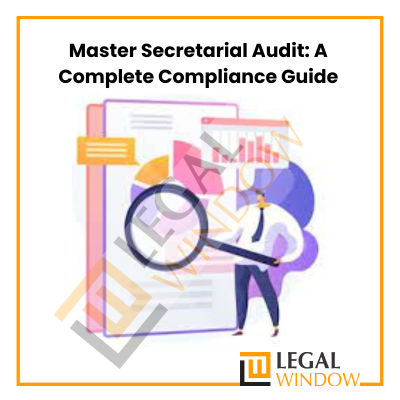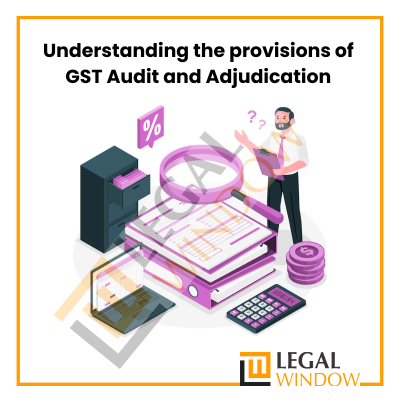 The Companies Act, 2013 (the Act) emphasizes flexibility and rigidity in the composition of the board of directors (boards). Flexibility hereby refers to the mandatory inclusion of rotating directors in the board of directors and Rigidity ensures the inclusion of non-rotating directors in the board of directors. The mentioned combination was ordered according to Section 152, sections 6 and 7 of the Act leading to the corresponding structure of the company’s statutory body. So let us have a quick look at the retirement by rotation section 152(6) & (7) of the Companies Act, 2013.
The Companies Act, 2013 (the Act) emphasizes flexibility and rigidity in the composition of the board of directors (boards). Flexibility hereby refers to the mandatory inclusion of rotating directors in the board of directors and Rigidity ensures the inclusion of non-rotating directors in the board of directors. The mentioned combination was ordered according to Section 152, sections 6 and 7 of the Act leading to the corresponding structure of the company’s statutory body. So let us have a quick look at the retirement by rotation section 152(6) & (7) of the Companies Act, 2013.
But before we shall be looking at the Retirement by Rotation of Directors’ Let us take a short gist about the Directors in the Company.
| Table of Contents |
Directors in a Company
Directors are the members of the collective body known as the Board of Directors who are in charge of overseeing, managing, and directing a company’s operations. Directors are regarded as trustees of the company’s property and money, and they also function as agents in transactions entered into on the company’s behalf.
Directors are required to carry out their responsibilities and obligations as reasonably diligent individuals with the same competence, knowledge, and experience as the person performing director activities and him.
A company’s affairs are controlled, managed, and directed by its directors. He/she has several jobs in the company. As a result, a director serves in various capacities in a company: agent, employee, officer, and trustee.
Retirement of Directors
Directors may be removed either by rotation or for a fixed term. When finalizing the board, the company must make provisions in the company documents for the manner of retirement and the directors must be well informed about their retirement process. Breach of such provision is punishable under Section 172 of the Companies Act 2013.
Prohibition on the retirement of directors in case of a Government company or a subsidiary of a Government company – Provisions relating to the retirement of directors and filling of vacancies do not apply to (a) a Government company (other than a listed company) where at least 50% of the paid-up share capital is held by the Central Government or any State Government or both the whole of the paid-up capital is held by the Central Government or a State Government or both, or a subsidiary thereof (b) a subsidiary of a Government company referred to in clause (a) above [amendment of MCA Notification No. 463(E) of 13 June 2017]
Prohibition of retirement of directors in a private company or sole proprietorship – In the case of a private company or OPC, directors need not retire by rotation or otherwise as Section 152(6) of the Companies Act, 2013 applies only to public companies.
Section 152 of the Companies Act, 2013
This provision ensures that the members of the company have the power to remove a majority of the board members and to appoint any other board member to that position. This provision was discussed and adopted from the 1952 report of the Company Law Committee “Bhabha Committee Report”. Provisions concerning the above-mentioned concept are regulated in Section 152 sub-sections 6 and 7 of the Act.
Removal of members of the Board of Directors by Rotation of the Company (S.152 (6))
The article of association of a public company provides for the removal of all members of the board of directors at each annual general meeting of the company. Otherwise, at least 2/3 of the total number of directors of a public company will be persons whose term of office is subject to determination by the removal of members of the board of directors by rotation and who are appointed by the company at the general meeting. The remaining directors of such public companies shall also be appointed by the company in general meetings, subject to any provisions in the articles of association of the such company.
Note that as explained in section 152(6) Companies Act, 2013, the total number of directors does not include independent members. Furthermore, according to section 149 (13), the requirement to leave the position by rotation according to sub-sections 6 and 7 of section 152 does not apply to the appointment of independent directors.
At the first general meeting of a public company held following the date of the general meeting at which the first members of the board of directors are appointed, and for the next general meeting, for the time being, 1/3 of those directors who are obliged to retire by rotation, or if their number is neither three nor a multiple of three, the number closest to one third will resign.
For example: If a company has 6 directors, then
- The directors who can retire by rotation will be equal to 6*2/3 i.e. 4 and
- The number of directors retiring will be 4*1/3 i.e. 1.33 or the nearest one-third is 1.
Directors who have been in office the longest shall retire by rotation at the general meeting. However, persons who became directors on the same day shall retire as per mutual agreement otherwise the same shall be determined by lot. However, the company may fill this vacancy at the general meeting at which the director retires by appointing a retiring director or another person.
Re-appointment of the Director of the Company (S. 152 (7))
Under the provisions of section 152(7), if the vacant position of the retiring director is not filled in this way and the general meeting has not expressly decided not to fill the vacant position, the meeting will be adjourned to the same day in the next week, at the same time and place, or if that day is a public holiday, until the following day which is not a holiday, at the same time and in the same place.
If the vacancy of the retiring director is not filled even at the adjourned meeting and the meeting does not expressly resolve that it shall not be filled, the retiring director shall be presumed reappointed at the adjourned meeting.
However, a retiring director is not considered to have been appointed at an adjourned meeting in the following five cases:
- Resolution sent and lost: If a resolution to reappoint the retiring director has been moved at this meeting or a previous meeting and lost;
- Reluctance to re-appointment: If the retiring director has given written notice of his reluctance to be re-appointed;
- Disqualified: If the outgoing director is not qualified or is disqualified for appointment as a director of the company;
- Requirement of Resolution: If a Special Resolution (SR) or Ordinary Resolution (OR) is required for his appointment or reappointment under any provisions of the Companies Act, 2013; or
- Applicability of Section 162: If the provision of section 162 (Appointment of executive officers who are voted on individually) applies to the given case. As explained in Section 152(7) Companies Act, 2013, the expression “retiring director” means a director retiring by rotation.
Categories of Directors who cannot retire by Rotation
Following are the categories of directors who cannot retire by rotation:
- Independent Directors: Independent directors have been excluded from the provisions on directors who can retire by rotation. The explanation attached to § 152 paragraph 6 expressly excludes the inclusion of independent members of the board of directors in the total number of members of the board of directors.
Furthermore, according to section 149 (13) stipulates that the provisions of subsections (6) and 7 of section152 regarding the departure of members of the board of directors by rotation do not apply to the appointment of independent members of the board of directors.
- Small Shareholder Director: Under section 151 read with rule 7 of the Companies (Appointment and Qualification of Directors) Rules, 2014, sub-rule 5 expressly prohibits that the appointment of such director is not liable to retire by rotation.
- Nominee Directors: According to the Explanation to section 149(7), a nominee director was treated as a non-executive, non-independent director. There is nothing in the definition to indicate that they will not be required to retire by rotation.
Because of the above, it is appropriate to consider that when a person is nominated as a director on the board of a company by a public financial institution, under the legislation under which those institutions were created, it has been expressly stated that the nominated director shall not retire by rotation and shall hold his office at the will and pleasure of the appointing institution. It is at the behest of the institution that the appointment is either revoked or replaced.
Given the above, the question that assumes importance is whether a Nominee Director appointed under specific regulations will have to retire by rotation. Due to the paramount nature of the legislation regarding the appointment of these directors, it can be stated that they cannot be subject to retirement by rotation. However, persons appointed as nominee directors under agreements with companies may be forced to retire by rotation.
- Additional Director: The board may need to appoint directors urgently to strengthen its strength and may not be in a position to wait until the annual general meeting, to consider appointing a new director.
In such a situation, as permitted by section 161, subject to the existence of enabling provisions in the articles, the board may appoint an additional director whose term of office will last until the date of the next annual general meeting at which his appointment is usually regulated by the procedure. Therefore, an additional director appointed by the board is not included in the list of directors who can retire by rotation.
Likewise, if a seat on the board of directors becomes vacant due to the resignation, death, or incapacity of a member of the board of directors, the board of directors is authorized to fill the vacant seat at a duly convened meeting. The person appointed to fill the vacant position remains in the position of director until the end of the term of office of the director to whose vacant position he was appointed. Neither will he be included in the number of board members who can retire by rotation.
- Alternate Director: According to Section 161, sub-section 2, the company’s board of directors can appoint a substitute member who is absent for not less than three months from India if permitted by its articles of association or by a resolution passed by the company in general meeting, who is not a substitute director for any other director in the company or a substitute director in the same company.
 Final words
Final words
The above provisions ensure shareholder democracy and strengthen the corporate governance mechanism by providing an appropriate combination of “flexibility” and “rigidity” among the board of directors, in such a way that shareholders have the majority power to re-appoint or remove existing directors and appoint any other members of the board of directors.
Connect to our Experts at Legal Window, if you are facing any problems in understanding the Retirement of Directors in a Company by Rotation.
CS Urvashi Jain is an associate member of the Institute of Company Secretaries of India. Her expertise, inter-alia, is in regulatory approvals, licenses, registrations for any organization set up in India. She posse’s good exposure to compliance management system, legal due diligence, drafting and vetting of various legal agreements. She has good command in drafting manuals, blogs, guides, interpretations and providing opinions on the different core areas of companies act, intellectual properties and taxation.
Categories
- Agreement Drafting (23)
- Annual Compliance (11)
- Change in Business (36)
- Company Law (148)
- Compliance (89)
- Digital Banking (3)
- Drug License (3)
- FEMA (17)
- Finance Company (42)
- Foreign Taxation (6)
- FSSAI License/Registration (14)
- GST (118)
- Hallmark Registration (1)
- Income Tax (199)
- Latest News (34)
- Miscellaneous (164)
- NBFC Registration (8)
- NGO (14)
- SEBI Registration (6)
- Section 8 Company (7)
- Start and manage a business (21)
- Startup/ Registration (128)
- Trademark Registration/IPR (40)
Recent Posts
- Startup’s Guide to Employee Stock Ownership Plans April 29, 2024
- Master Secretarial Audit: A Complete Compliance Guide April 27, 2024
- Farmer Producer Companies-Major provisions under Companies Act April 26, 2024
About us
LegalWindow.in is a professional technology driven platform of multidisciplined experts like CA/CS/Lawyers spanning with an aim to provide concrete solution to individuals, start-ups and other business organisation by maximising their growth at an affordable cost.







